


The University of Delaware’s research enterprise kept advancing in FY2012, surpassing $140 million in sponsored research expenditures for the first time in UD history. This milestone represents a 35 percent increase over the past five years. Here, we highlight just a few of the year’s movers and shakers.
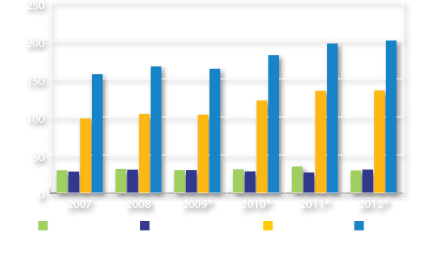
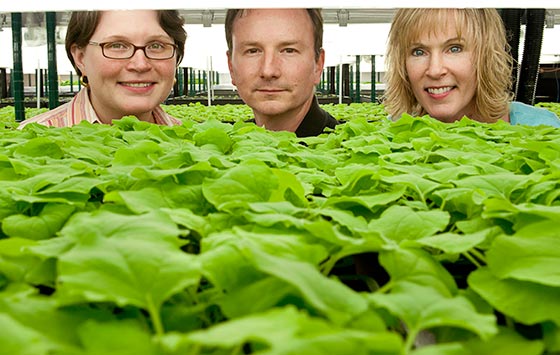
UD, the State of Delaware and Fraunhofer USA sign an agreement to move UD’s life science discoveries through the industry pipeline more quickly and close the gap between scientific innovation and commercial application. One partnership project is led by UD materials science and engineering professor Kristi Kiick (above right), who’s working with Fraunhofer’s Mark Jones and Jessica Chichester on engineered polymer gels to improve the therapeutic qualities of Fraunhofer-produced proteins.
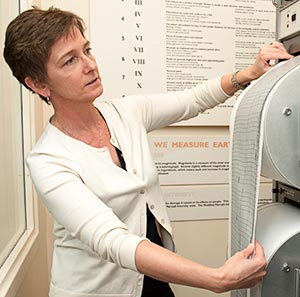
Stephanie Baxter, research associate at the Delaware Geological Survey, reviews seismographic data.
What do the largest earthquake felt in Delaware since 1886, and Hurricane Irene have in common? At UD, they presented some researchers with unique opportunities to collect data. Within hours of the Aug. 23rd quake, the Delaware Geological Survey urges Delawareans to fill out an Earthquake Felt Report. A day later, 800 are submitted, with the average intensity of building shaking reported as “moderate.” Days later as Irene looms, researchers with the Christina River Basin Critical Zone Observatory grab their gear to learn about climate change and water quality; in particular, how soil erosion into rivers might eventually bury carbon and sequester it from acting as a greenhouse gas.
UD wins $9.1 million for solar R&D projects from the U.S. Department of Energy’s SunShot Initiative. It was the highest funding awarded to a university and wholly accounted for Delaware being the third-highest funded state. The Institute of Energy Conversion, a University Center of Excellence for Photovoltaic Research and Education, is involved in each of the five UD grants and one subcontract, which focus on transferring applied research into technologies that improve solar cell efficiency, performance and production.
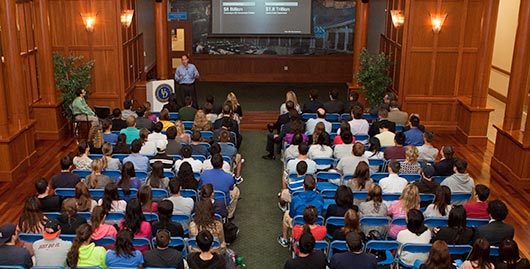
The JPMorgan Chase Innovation Center opens, the first of three new research centers, among 70+ total at UD. There, UD faculty and students and JPMorgan Chase employees work side-by-side on business analytics research, and students get on-the-job training in optimizing financial services operations. The Center for Science, Ethics and Public Policy presents formal research ethics programs and the Science Café, an informal gathering where scientists share their research with the public. The Center for the Study of Diversity, a scholarly think-tank, researches diversity issues and also helps guide the University in the best ways to improve diversity on campus.
A UD-led network has its finger on the ocean’s pulse and is putting that data to use to aid search-and-rescue missions at sea, save shipping time and fuel costs, and protect fish stocks. Supported by the National Oceanic and Atmospheric Administration, the Mid-Atlantic Regional Association Coastal Ocean Observing System (MARACOOS) is a 40-member network with hundreds of data gatherers, from satellites to underwater robots, spanning the coast from Cape Cod to Cape Hatteras. It is one of 11 regional observing systems that form the U.S. Integrated Ocean Observing System, which, in turn, is part of a global ocean observing network.
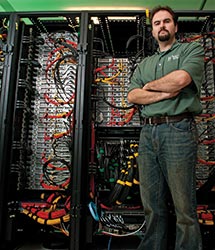
The University announces a major expansion in research capability: a new 5,000-processor, high-performance computing cluster named in honor of David L. Mills, UD professor emeritus of electrical and computer engineering, and a pioneer of the early Internet and its precursor networks. In particular, Mills’ Network Time Protocol (NTP) makes possible such online activities as aviation traffic control and monitoring, radio and TV programming launch and control, multimedia synchronization for real-time teleconferencing and traffic engineering. Mills is the first in a series of high-performance computing clusters IT plans to build collaboratively with UD faculty to improve research computing.
The University of Delaware led students on its first study program overseas in 1923. Today, nearly 40 percent of UD students study abroad before they graduate, increasingly with research or service components. In January, the University’s Engineers Without Borders (UD-EWB) student chapter puts its engineering know-how to work to build a bridge over the Rio Vibora in San Marcos, Guatemala, connecting the village of San Jose Petacalapa with farmland bordering the river. Initiated in 2009, it was the first known bridge project undertaken solely by an EWB student chapter to be approved by EWB’s national organization.
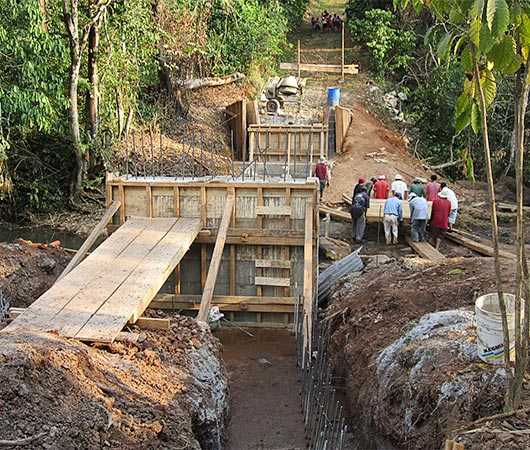
UD’s Engineers Without Borders student chapter at work building a bridge over the Rio Vibora in San Marcos, Guatemala.
Delaware academic researchers are reported as the most productive in the nation, far out-publishing their peers, in Science and Engineering Indicators 2012, issued by the National Science Board. Delaware academics top the nation in the publication of research articles in scholarly journals—an important measure of productivity and contributions to scientific knowledge. Based on 2008 data, Delaware academics published 812 articles compared to the national average of 580 articles per 1,000 doctorate holders in science and engineering fields. Delaware’s academic scientists and engineers also ranked first in the number of articles produced for every $1 million in academic research and development (R&D) funding. Delaware researchers published 4.64 articles compared to the national average of 2.97 articles.
The University of Delaware’s Department of Physical Therapy ranks second in the nation in U.S. News and World Report’s 2013 edition of Best Graduate Schools. Also recognized for their excellence: the School of Education; School of Public Policy Administration and its specialty rankings for city management and urban policy, nonprofit management and public management administration; Department of Psychology/clinical psychology, College of Engineering/chemical engineering; and Department of Art.

UD students in chemical and biochemical engineering win major scholarships. Elizabeth (Lizzy) Mahoney, doctoral student from Overland Park, Kan., is one of 10 UD students to win a National Science Foundation Graduate Research Program Fellowship, with a three-year annual stipend of $30,000, plus a $12,000 cost of education allowance. Her research focuses on developing cheaper, more efficient catalysts for fuel cells than the platinum currently in use. Undergrad Alexandra Bayles receives a Barry M. Goldwater Scholarship, which provides up to $7,500 per year toward college costs. The University Honors Program student from Severna Park, Md., ultimately aims to teach at a university and conduct renewable energy research.
UD names its research and education farm in Georgetown, Del., the Thurman G. Adams Agricultural Research Farm in honor of the late state senator from Bridgeville, Del., “a champion of Delaware agriculture” personally and professionally during his 37 years in the State Senate. Mark Isaacs, director of the Carvel Research and Education Center, notes how “the Substation,” Adams’ name for the farm, held a special place in the legislator’s heart: “He stated time and time again, that his goal was for the Substation to be the showcase for the East for research and Extension programs meeting the challenges for agriculture for years to come.”
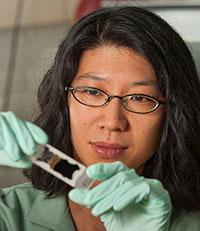
Clara Chan
Five from UD win prestigious Faculty Early Career Development Awards from federal agencies in 2012. Mary Watson and Sandeep Patel, in chemistry and biochemistry, and Holly Michael and Clara Chan, both in geological sciences, receive the award from the National Science Foundation; Joshua Zide, from materials science and engineering, wins his from the U.S. Department of Energy. Additionally, chemist Joel Rosenthal is selected as a 2012 DuPont Young Professor, a recognition bestowed by the chemical giant on some of chemistry’s most promising talents; and evolutionary biologist Salil Lachke is named UD’s first Pew Scholar in the Biomedical Sciences, an honor that has been won previously by several Nobel laureates.